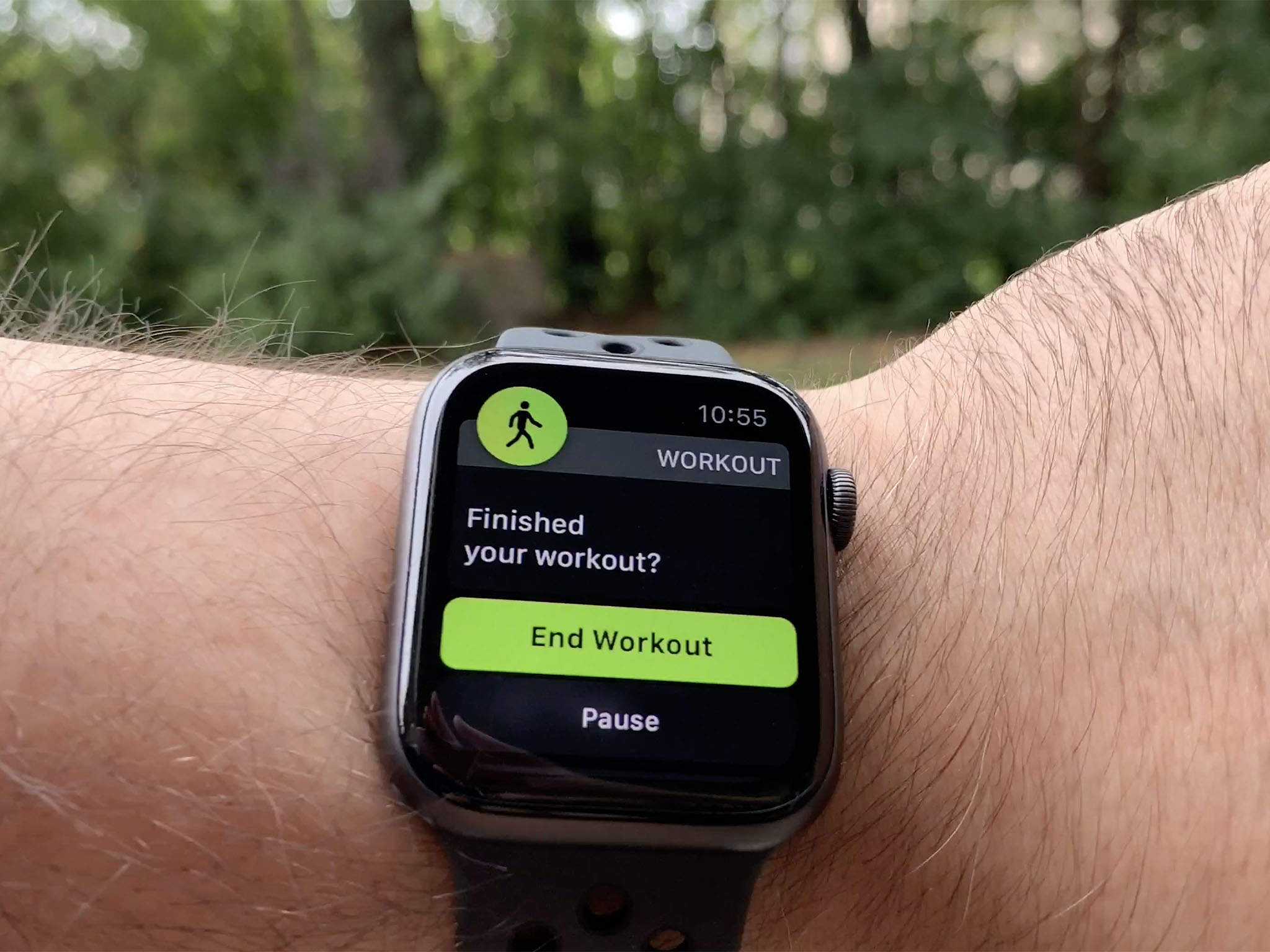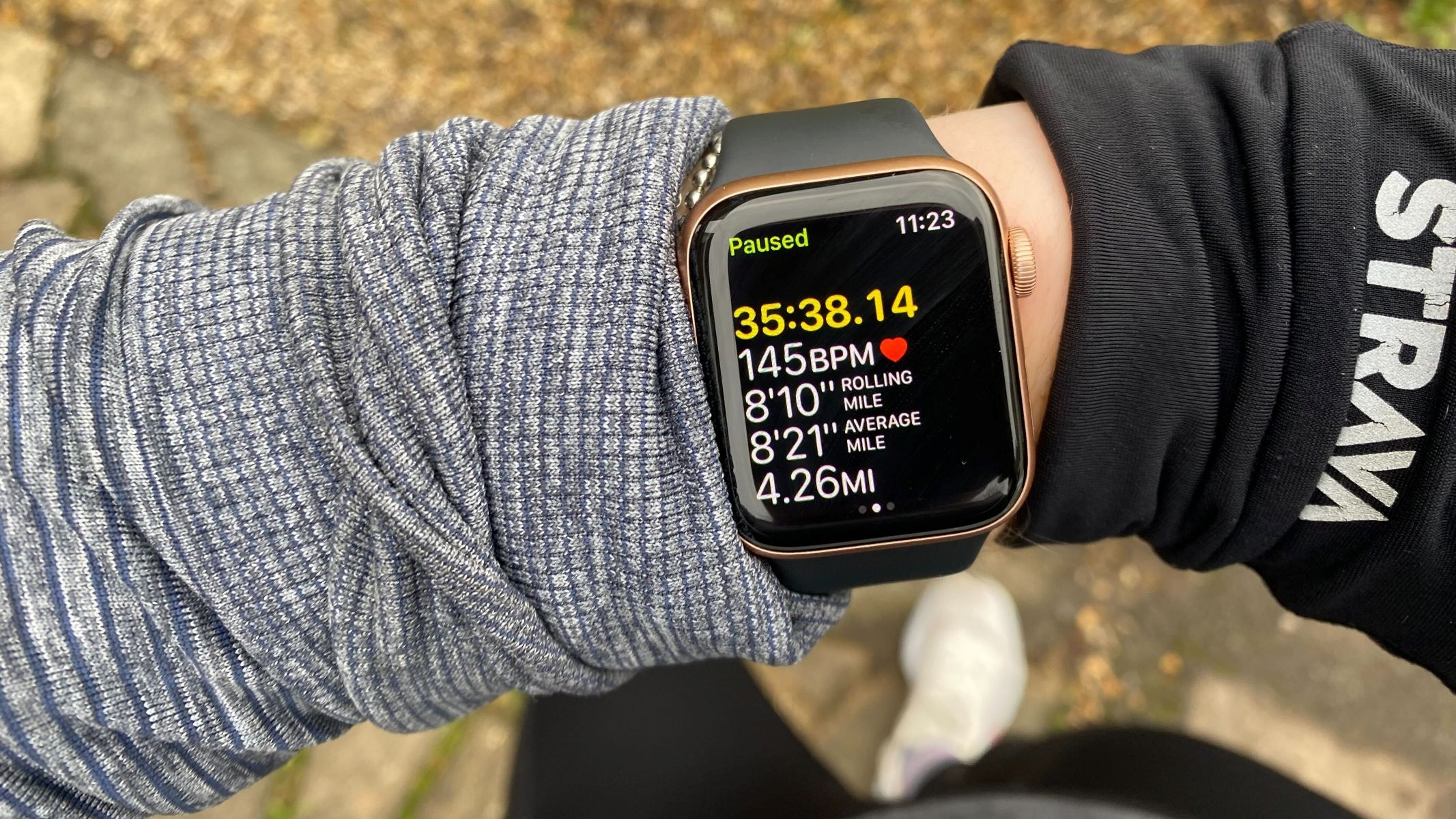Home>Misc>Featured>How Many Calories Do I Burn In A Day Without Exercise


Featured
How Many Calories Do I Burn In A Day Without Exercise
Published: October 7, 2023
Discover how many calories you burn daily without any exercise. Get featured insights on your baseline metabolic rate and maintain a healthy lifestyle effortlessly.
Introduction
Welcome to the world of calorie burning! Have you ever wondered how many calories your body burns each day without any intentional physical activity? Perhaps you’re curious about the amount of energy your body requires to simply function at rest, performing vital functions such as breathing, circulating blood, and maintaining body temperature. This is where your Basal Metabolic Rate (BMR) comes into play.
Your BMR represents the number of calories your body needs to maintain basic bodily functions while at complete rest. It is the foundation upon which your daily calorie needs are built, serving as a starting point for determining your overall energy requirements. By understanding how your BMR works, you can gain valuable insight into managing your weight and achieving your fitness goals.
In this article, we will explore the factors that influence your BMR and provide you with a comprehensive understanding of how your body burns calories at rest. So, let’s dive in and uncover the secrets behind your body’s energy expenditure.
Basal Metabolic Rate (BMR) Explained
Your Basal Metabolic Rate (BMR) refers to the number of calories your body burns while at complete rest. It represents the energy expended by your body to perform vital functions such as breathing, circulating blood, and maintaining body temperature. BMR accounts for around 60-75% of your total daily energy expenditure.
Calculating your BMR is essential for determining your daily calorie needs. By knowing your BMR, you can better understand how many calories your body requires to sustain itself without any physical activity. This is particularly helpful if you’re looking to maintain or lose weight.
Several factors influence your BMR, including age, gender, body composition, muscle mass, thyroid function, and even the climate you live in. Each of these factors plays a role in determining the speed and efficiency at which your body burns calories at rest.
It’s important to note that BMR does not take into account any additional calories burned through physical activity. To determine your total daily energy expenditure, you would need to factor in activity level using a separate equation or device.
Understanding your BMR can serve as a valuable tool in managing your weight. If your goal is to lose weight, you can create a calorie deficit by consuming fewer calories than your BMR, thus prompting your body to burn stored fat for energy. On the other hand, if your goal is to maintain or gain weight, you can adjust your calorie intake accordingly.
Let’s explore the various factors that influence your BMR in more detail, helping you gain a deeper understanding of how your body burns calories at rest and how you can utilize this information to achieve your fitness goals.
Factors Affecting BMR
Several factors can affect your Basal Metabolic Rate (BMR). These factors influence the speed and efficiency at which your body burns calories at rest, ultimately impacting your overall energy expenditure. Let’s explore these factors in more detail:
- Gender: Men generally have a higher BMR compared to women. This is primarily due to differences in body composition, hormonal levels, and overall muscle mass. On average, men tend to have a higher percentage of lean muscle mass, which requires more energy at rest compared to fat tissue.
- Age: As you age, your BMR tends to decrease. This is mainly due to a decline in muscle mass, which naturally occurs with age. Additionally, hormonal changes and a decrease in physical activity can further contribute to the decrease in BMR.
- Body Composition: The ratio of muscle mass to fat mass in your body plays a significant role in determining your BMR. Muscle tissue is more metabolically active than fat tissue, meaning it requires more energy to maintain. Therefore, individuals with a higher percentage of muscle mass typically have a higher BMR.
- Muscle Mass: As mentioned previously, muscle mass is a key factor in determining BMR. The more muscle mass you have, the higher your BMR will be. Incorporating strength training exercises into your routine can help increase your muscle mass and boost your BMR.
- Thyroid Function: The thyroid gland plays a crucial role in regulating metabolism. If your thyroid is underactive (hypothyroidism), it can lead to a decrease in BMR. Conversely, if your thyroid is overactive (hyperthyroidism), it can result in an increased BMR.
- Climate: Believe it or not, the climate you live in can impact your BMR. In colder temperatures, your body works harder to maintain its core temperature, resulting in an increase in BMR. On the other hand, in hot climates, your BMR may slightly decrease due to the heat’s influence on metabolic processes.
It’s important to note that while these factors play a significant role in determining your BMR, they are not the sole determining factors. Genetic factors, medications, and certain medical conditions can also influence your BMR, so it’s always best to consult with a healthcare professional for personalized guidance.
Gender and BMR
Gender is an important factor that influences your Basal Metabolic Rate (BMR). On average, men tend to have a higher BMR compared to women. This can be attributed to various factors, including differences in body composition, hormonal levels, and overall muscle mass.
One primary reason for the difference in BMR between genders is the variation in body composition. Men tend to have a higher percentage of lean muscle mass compared to women. Muscle tissue is metabolically active and requires more energy to maintain, even at rest. This means that men’s bodies naturally burn more calories than women’s bodies for basic bodily functions.
In addition to body composition, hormonal levels also play a role in gender differences in BMR. Testosterone, a hormone more prevalent in men, plays a role in muscle development and can contribute to higher muscle mass. As mentioned earlier, muscle tissue has a higher metabolic rate, thus increasing BMR in men.
It’s important to note that women naturally have a higher proportion of essential fat than men. Essential fat is necessary for reproductive functions and hormone regulation. This higher proportion of essential fat can slightly lower women’s BMR compared to men.
Age is another factor to consider when examining gender and BMR. As individuals age, their BMR tends to decrease. This decline is more noticeable in women due to hormonal changes associated with menopause. Estrogen levels decrease during menopause, which can contribute to a decrease in muscle mass and subsequently lower BMR.
While it is true that men generally have a higher BMR, it’s important to note that individual variations exist within each gender. Factors such as genetics, lifestyle, and overall health can impact BMR regardless of gender.
Understanding the gender differences in BMR can be helpful when setting weight management goals. It’s important to consider these differences when developing a nutrition and exercise plan. For women, incorporating strength training exercises can be particularly beneficial in increasing muscle mass and subsequently boosting BMR.
However, it’s essential to remember that while BMR is influenced by gender, it is just one piece of the weight management puzzle. Individualized approaches that consider overall lifestyle, activity level, and dietary habits are necessary for achieving sustainable weight goals.
Age and BMR
Age is an important factor that influences your Basal Metabolic Rate (BMR). As you age, your BMR tends to decrease. This decline in BMR is primarily attributed to changes in body composition, hormonal levels, and overall physical activity.
One of the main factors contributing to the decrease in BMR with age is the loss of muscle mass. As we get older, we naturally experience sarcopenia, which is the gradual loss of muscle tissue. Muscle tissue is metabolically active and requires more energy to maintain compared to fat tissue. Therefore, as the proportion of muscle decreases, so does the energy expenditure at rest, resulting in a lower BMR.
Furthermore, hormonal changes that occur with age can also impact BMR. For example, as men and women reach middle age, their hormone levels, such as testosterone and estrogen, may decline. These hormonal changes can lead to a decrease in muscle mass and an increase in body fat, further lowering BMR.
In addition to changes in body composition and hormonal levels, overall physical activity tends to decrease with age, leading to a decline in BMR. Factors such as sedentary lifestyle, decreased exercise, and reduced daily movement can contribute to lower energy expenditure at rest.
It’s important to note that while BMR naturally decreases with age, there are ways to mitigate this decline. Regular physical activity, particularly strength training exercises, can help preserve and build muscle mass, thus increasing BMR. Engaging in activities like weightlifting or resistance training can stimulate muscle growth and help combat age-related muscle loss.
Nutrition also plays a crucial role in managing BMR as you age. Consuming a balanced diet that provides adequate protein, essential nutrients, and hydration can support muscle maintenance and function. Additionally, staying hydrated can optimize metabolic processes and help maintain a healthy BMR.
While age-related changes in BMR are inevitable, maintaining an active lifestyle, engaging in regular exercise, and adopting healthy eating habits can help slow down the decline and support overall health and well-being.
Body Composition and BMR
Your body composition, specifically the ratio of muscle mass to fat mass, plays a significant role in determining your Basal Metabolic Rate (BMR). Body composition refers to the proportion of muscle, fat, bone, and other tissues in your body.
Muscle tissue is metabolically active, meaning it requires more energy to maintain compared to fat tissue. This is why individuals with a higher percentage of lean muscle mass generally have a higher BMR. Muscle tissue burns more calories at rest, contributing to a higher energy expenditure.
In contrast, fat tissue has a lower metabolic rate and therefore requires fewer calories to maintain. This is why individuals with a higher percentage of body fat tend to have a lower BMR. Fat tissue is less metabolically active, resulting in a lower energy expenditure at rest.
Increasing your muscle mass through strength training exercises can have a positive impact on your BMR. As you build more muscle, your body’s calorie-burning capacity increases, even when at rest. This is why strength training is often recommended for individuals looking to boost their metabolism and lose weight.
In addition to muscle mass, the distribution of body fat can also influence BMR. For example, visceral fat, which accumulates around the internal organs, has been associated with various health risks and a lower BMR. On the other hand, subcutaneous fat, which is found just beneath the skin, has a lesser impact on metabolism.
Genetics also play a role in body composition and BMR. Some individuals may have a genetic predisposition to higher or lower levels of muscle mass and body fat. However, it’s important to remember that genetics are not the sole determining factor, and lifestyle choices such as diet and exercise still play a critical role in managing body composition and BMR.
While body composition has a significant impact on BMR, it’s crucial to remember that overall health and well-being are more important than a specific number on the scale. While it’s beneficial to build muscle and reduce excess body fat for metabolic health, focusing on overall fitness, proper nutrition, and a balanced lifestyle should take precedence.
Regardless of your current body composition, adopting healthy habits such as regular exercise, balanced nutrition, and adequate rest can contribute to a more efficient metabolism and improved overall health.
Muscle Mass and BMR
Muscle mass plays a crucial role in determining your Basal Metabolic Rate (BMR). The more muscle mass you have, the higher your BMR will be. Muscle tissue is metabolically active, meaning it requires more energy to maintain compared to fat tissue. This higher energy expenditure contributes to an increased BMR.
When you engage in strength training exercises or resistance training, you create micro-tears in your muscle fibers. These tears are repaired during the recovery process, leading to muscle growth and an increase in muscle mass. As your muscle mass increases, your BMR also increases, even when you’re at rest.
In fact, studies have shown that for every pound of muscle gained, your body can burn an additional 6-10 calories per day. This may not seem like much, but over time, it can add up and contribute to significant changes in body composition and overall metabolic rate.
Another important aspect to consider is that muscle tissue is more dense than fat tissue. This means that even if you maintain the same weight, but increase your muscle mass and decrease your body fat percentage, your body becomes more compact and leaner. This change in body composition can lead to an increase in BMR, as muscle tissue requires more energy to support its functions.
It’s important to note that maintaining muscle mass becomes increasingly crucial as you age. With age, there is a natural decline in muscle mass, a process called sarcopenia. Sarcopenia can lead to a decrease in BMR and a slower metabolism. Engaging in regular strength training exercises can help prevent muscle loss, maintain a healthy BMR, and support overall functional independence.
However, it’s important to approach muscle gain in a balanced and sustainable manner. Building excessive amounts of muscle solely for the purpose of increasing BMR may not be necessary or healthy for everyone. It’s essential to find a balance that aligns with your individual goals, preferences, and overall health.
Alongside strength training, it’s crucial to fuel your muscles with adequate nutrition to support their growth and repair. Consuming a balanced diet that includes sufficient protein, complex carbohydrates, and healthy fats can provide the necessary building blocks for muscle development and support a healthy BMR.
Remember, the goal should be to maintain a healthy and functional level of muscle mass that supports your overall well-being rather than solely focusing on a number on the scale. By incorporating regular strength training and nourishing your body appropriately, you can optimize your muscle mass, increase your BMR, and improve your overall metabolic health.
Thyroid Function and BMR
The thyroid gland, located in the neck, plays a crucial role in regulating numerous bodily functions, including your Basal Metabolic Rate (BMR). The thyroid produces two hormones, triiodothyronine (T3) and thyroxine (T4), which are responsible for regulating metabolism. When it comes to thyroid function and BMR, two scenarios can occur: hypothyroidism and hyperthyroidism.
In hypothyroidism, the thyroid gland does not produce enough thyroid hormones, resulting in a slowed-down metabolism. This can lead to a decrease in BMR as the body’s energy expenditure at rest decreases. Common symptoms of hypothyroidism include fatigue, weight gain, dry skin, sensitivity to cold, and slow heart rate.
On the other hand, hyperthyroidism is a condition where the thyroid gland produces an excessive amount of thyroid hormones. This speeds up the metabolism and can result in an increased BMR. People with hyperthyroidism may experience weight loss, irritability, increased heart rate, sweating, and difficulty sleeping.
Thyroid disorders, whether hypo- or hyperthyroidism, can affect BMR by altering the body’s metabolic rate. In cases of hypothyroidism, the decrease in thyroid hormone production leads to a slower metabolic rate and a decreased BMR. Conversely, hyperthyroidism elevates the metabolic rate and increases BMR.
It’s important to note that while thyroid disorders can impact BMR, they are medical conditions that require diagnosis and treatment by a healthcare professional. If you suspect you may have a thyroid issue, it’s essential to consult with a healthcare provider for proper evaluation and management.
Treatment for thyroid disorders often involves medication to restore proper thyroid hormone levels. Once thyroid hormone levels are balanced, the impact on BMR may be minimized, and the body’s metabolism can return to a more normal state.
While thyroid function plays a role in BMR, it’s important to remember that not everyone with a thyroid disorder will experience drastic changes in their BMR. Proper management of the thyroid condition, along with other lifestyle factors such as nutrition and exercise, is essential for maintaining a healthy metabolism.
It’s worth noting that other factors, such as age, gender, and body composition, can also influence BMR. Therefore, it’s crucial to take a comprehensive approach to managing BMR and overall metabolic health, incorporating lifestyle habits that support a balanced metabolism.
Climate and BMR
Believe it or not, the climate you live in can have an impact on your Basal Metabolic Rate (BMR). The BMR of individuals living in colder climates tends to be slightly higher compared to those in warmer climates.
When exposed to cold temperatures, your body works harder to maintain its core temperature. This increased effort results in a higher BMR as your body expends more energy to generate heat and keep you warm. The body activates various mechanisms, such as shivering and vasoconstriction, to conserve heat and maintain a stable body temperature.
In an attempt to generate heat, your body’s metabolism revs up, causing an increase in calorie burning. This is why people living in colder climates may notice a slight increase in their appetite during the winter months, as the body tries to obtain extra calories to fuel the increased energy expenditure.
Conversely, in warmer climates, the body has an easier time regulating its temperature, as there is less need for internal heat production. This can result in a slightly lower BMR as the body’s energy expenditure decreases.
It’s important to note that the impact of climate on BMR is relatively small and may not have a significant overall effect on weight management. While the difference in BMR between climates exists, it does not necessarily translate into substantial variations in body weight.
Factors such as personal activity levels, dietary choices, and overall lifestyle play much larger roles in determining body weight and composition. Therefore, while climate may influence BMR to some extent, it should not be the sole focus when it comes to weight management.
It’s also worth mentioning that individuals can acclimatize to their environment over time. For example, those living in colder regions may adapt to the lower temperatures and experience a lesser increase in BMR compared to individuals who are not accustomed to the cold.
Overall, it’s essential to maintain a well-rounded approach to managing BMR and overall metabolic health. This includes regular physical activity, a balanced diet, adequate rest, and paying attention to individual factors such as age, gender, and body composition.
While climate can have a minor influence on BMR, focusing on overall lifestyle choices and creating healthy habits should be the primary focus for achieving and maintaining a healthy weight and overall well-being.
Conclusion
Your Basal Metabolic Rate (BMR) serves as the foundation for understanding how many calories your body burns at rest. Several factors influence your BMR, including gender, age, body composition, muscle mass, thyroid function, climate, and more.
Gender plays a role, with men typically having a higher BMR due to differences in body composition and hormonal levels. Age also affects BMR, as muscle mass naturally decreases with age. Body composition, specifically the ratio of muscle to fat, impacts BMR, as muscle tissue requires more energy to maintain. Increasing muscle mass through strength training can raise your BMR.
Thyroid function is important, as both hypothyroidism and hyperthyroidism can affect BMR by slowing down or speeding up metabolism, respectively. Climate can also influence BMR, with colder temperatures increasing energy expenditure to maintain body temperature.
Understanding these factors provides valuable insight into managing your weight and overall metabolic health. It’s important to note that individual variations exist within each factor, and a comprehensive approach to weight management is necessary. Building muscle, maintaining a balanced diet, and engaging in regular physical activity are key components of optimizing BMR.
Remember, BMR is just one piece of the puzzle when it comes to weight management and overall health. Incorporating healthy lifestyle habits, consulting with healthcare professionals, and listening to your body’s needs are essential for achieving sustainable results.
By considering these factors and taking a holistic approach, you can optimize your BMR, support a healthy metabolism, and work towards achieving your fitness goals.






